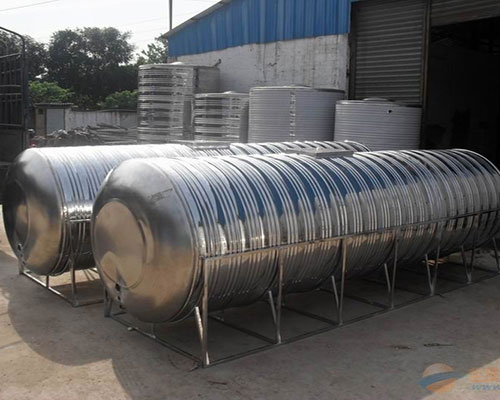Essentially, a septic tank, also known as a Private Onsite Wastewater Treatment Systems (POWTS) is an efficient way of disposing the household waste. The system is mostly installed in places with low access to public sewer.
With proper installation and maintenance, it is an effective way of separating the solid waste and removal of pathogens. To modify or install your own septic tank system, an onsite wastewater permit is necessary.
Septic tanks are majorly classified into two, which is gravity fed and pump system that includes electric pumps. The versatile tanks require cautiousness when installing them since repairing and replacing them is not only expensive but also unnecessarily involving.
Majority of homeowners are mostly tempted to find means of saving money and doing projects that will help them save a lot of money. The installation of septic tank must be undertaken by an expert contractor.
This is because the system involves the removal of organic wastes or biodegradables to the place that is suitable and secure for the natural breakdown process to take place.
The installation of septic tank for a single family using the gravity design may cost between $5,000 and $15,000. This includes the labor and materials costs.
The cost of installing this system also depends on the places that you stay and the number of homeowners who are going to use the system.Since this system is a critical part of the infrastructure, it is necessary that you construct your system correctly to ensure that you have a trouble free long term system operation.
It is always important to work with a plan and design in any project. To install the septic tank system, there are certain issues that must be considered prior to designing your system.
It is important to consider the lot size, access for maintenance, soil features, setbacks and future replacement.
The septic tank system comprises two critical elements. The tank and discharge area or percolation area. It is generally designed based on the number of individuals in the house.
The percolation area is the gravel infiltration area where the effluent from the tank is soaked into the soil. It is the most preferred disposal method for this system.
The design of the percolation area mostly depends on the conditions of the soil on the site. For those grounds that are wet, the percolation area can be large, whereas a permeable ground with higher rate of infiltration, the percolation area may be smaller in size.
It is important to look into the space available before you design your septic tank. Check on the location of the neighboring tanks and topography of the particular area. You can also perform the soil tests before designing.
As the word suggests, the flow of the waste from the house to the tank ( fiberglass septic tank )all depends on gravity. Consequently, the pipes from the house to the tank should therefore allow efficient flow without any backflow.
Drill a hole carefully through the wall or deeper depending on your preference. The depth however should not be less than 2 feet.
Ensure that there is at least an eighth inch per foot slope. After this, seal the hole in the house carefully around the pipe.
Note: a pitch that runs too much may result to solid being left in the pipe as the water runs.
This should be done when maintaining positive flow between the house and the septic tank. The hole should therefore be of apposite depth once again to prevent backflow of waste and all the health hazards around poor drainage.
Dig the holes and ensure that you have proper grades. Make sure that the field lines are well sloped to avoid premature failure.
The grades are necessary here so be sure to follow all the guidelines. Don't install field lines very deep underground. This is because they will not work correctly.
The drain rock should be 1.5 inches from the proximate grit pit. This is to ensure that the pipe is held steadily. Cover everything including the field lines with rocks to keep it strong and intact.
Note: the size of the embedment needed should be sought from the relevant authorities and professionals.
This is very important before covering up the tank. It should be done depending on the laws of the governing administration. This is important as it will help you to avoid unnecessary frustration from the governing authorities.
Ensure that everything is correctly put in place. Contact the authorities for the approval and then start covering your septic tank. This will also help you to avoid wasting time, energy and resources.
Note: this is as well very important right before installing a septic tank ( plastic septic tank ); all the necessary approvals and permits should be sought. Installing should be done professionally and with compliance with any laws.
While the gravity fed system depends on the gravity, pump chamber on the other hand requires a pump in order to function as the word suggests, this should be installed right after installing the tank.
Installing the septic tank is actually an involving task. This is the reason why you should consult an expert to do it for you. Install the pump chamber for easy pumping of the wastes to the septic tank.
The pump pumps the waste at given intervals of time from place to place say from house to the septic tank or from the septic tank to the drain field.
Note: the electrical installation should be done by a professional electrician and should be done with expertise to meet satisfy all the regulations.
During installation, ensure that the location of the tank, pump and everything concerning the system is in compliance with the law. This will ensure that you will not keep wasting time with needless struggle with the health authorities.
Let the health experts come and check all the necessities and give your system an approval. They will look at things like how deep the tank is and how far it is from the homes.
As earlier mentioned, this should be done after consulting with all the relevant authorities in the state. After they have given their final approval, the system can then be actuated.
Note: Since in this case the tank may be empty at some point, extra weight should be used to prevent floating of the tank and protect it from any damage.
Most people overlook the good ventilation when installing the septic tank or even the sewage treatment plant. If you don't ventilate your system well, your system may produce a bad odour.
Ensure that the ends of the percolation trenches are well ventilated and that there is a vent constructed on the wastewater treatment plant. You can also stack a soil vent at the house. Check your system every time to see if there is any place that licks.
Private Onsite Wastewater Treatment Systems (POWTS) commonly known as septic tanks are very important and improve the health of the beneficiaries significantly.
Since they are meant to serve you for a lifetime, they should be installed with skill and inspection by relevant authorities should be done at each and every step.
Make sure that when installing the septic tank system, you call the experts to construct it for you. This is because the process is quite involving hence you cannot do it alone perfectly.


